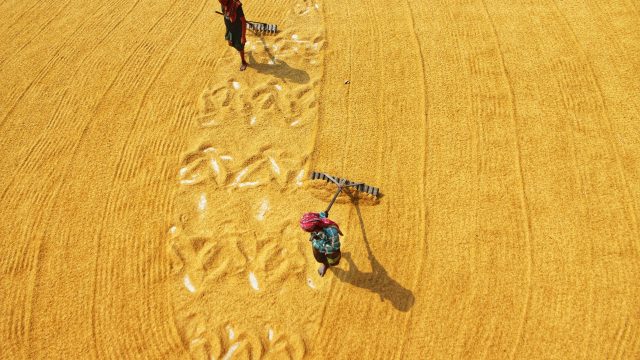Emerging economies hit hardest by climate finance risk

New research published by SOAS has found that climate change is already driving up the debt repayment costs of developing countries, and future warming will only increase the cost of capital for all sovereign nations – but especially those in the global south. Realising this, the rating agency Standard & Poors is beginning to assess sovereign exposure to climate change threats, and thus mapping the economic, fiscal & trade implications of climate breakdown.
Emerging countries are often highly indebted, borrowing on international markets to finance investment in infrastructure, development programmes, and imports of essential goods. They tend to have relatively weak sovereign ratings and higher borrowing rates, and thus are particularly sensitive to new financial burdens. They are also disproportionately exposed to climate and environmental risks, with the burden of anticipated climate impacts falling overwhelmingly on the poorest countries.
As rating agencies such as Standard & Poors begin to fold exposure to climate risk into their sovereign credit ratings, they are increasingly aware of the complexity, uncertainty and severity of these risks. But their initial assessments have emphasised that developing countries are particularly exposed, and thus most at risk of seeing their ratings downgraded – increasing future borrowing costs.
Impact
Downgraded ratings are already limiting countries ability to fund education, health, and infrastructure programmes, invest in development, or finance climate adaptation projects. SOAS found that climate vulnerability has already cost emerging economies USD 62 billion in higher interest payments over the last ten years and estimated that climate risks would inflate interest payments by between USD 146 – USD 168 billion over the next decade.
In other words, for every ten dollars paid in interest by developing countries, an additional dollar is already spent due to climate vulnerability, and this is expected to at least double over the next decade. This financial burden exacerbates the present-day economic challenges of poorer countries, entrenching their poverty as the global climate enters a period of profound uncertainty. Facing greater debt burdens, and unable to raise additional capital, poor countries could be prevented from funding urgent investments in adaptation and mitigation to protect their economies and communities from climate change, just when those investments are most needed.
Challenges and lessons
Global capital markets must be encouraged to recognise, assess and act upon climate risks. But much more must be done to ensure the burden of those risks does not fall on the shoulders of the poorest. The SOAS research calls for “cooperative efforts to measure, monitor, and transfer climate risks… [in order to] prevent a deterioration of sovereign borrowing capacity in affected countries. Monitoring the financial indicators used by the major rating agencies is a crucial tool for anticipating impacts on sovereign credit profiles.”
As the research makes clear, action on climate can reduce both the social, ecological and economic harm of climate change, but also reduce the financial burden on emerging economies in meeting debt repayments.
Sources
SOAS press release on the report
Executive Summary and link to full research
Standard & Poors paper on climate risks


